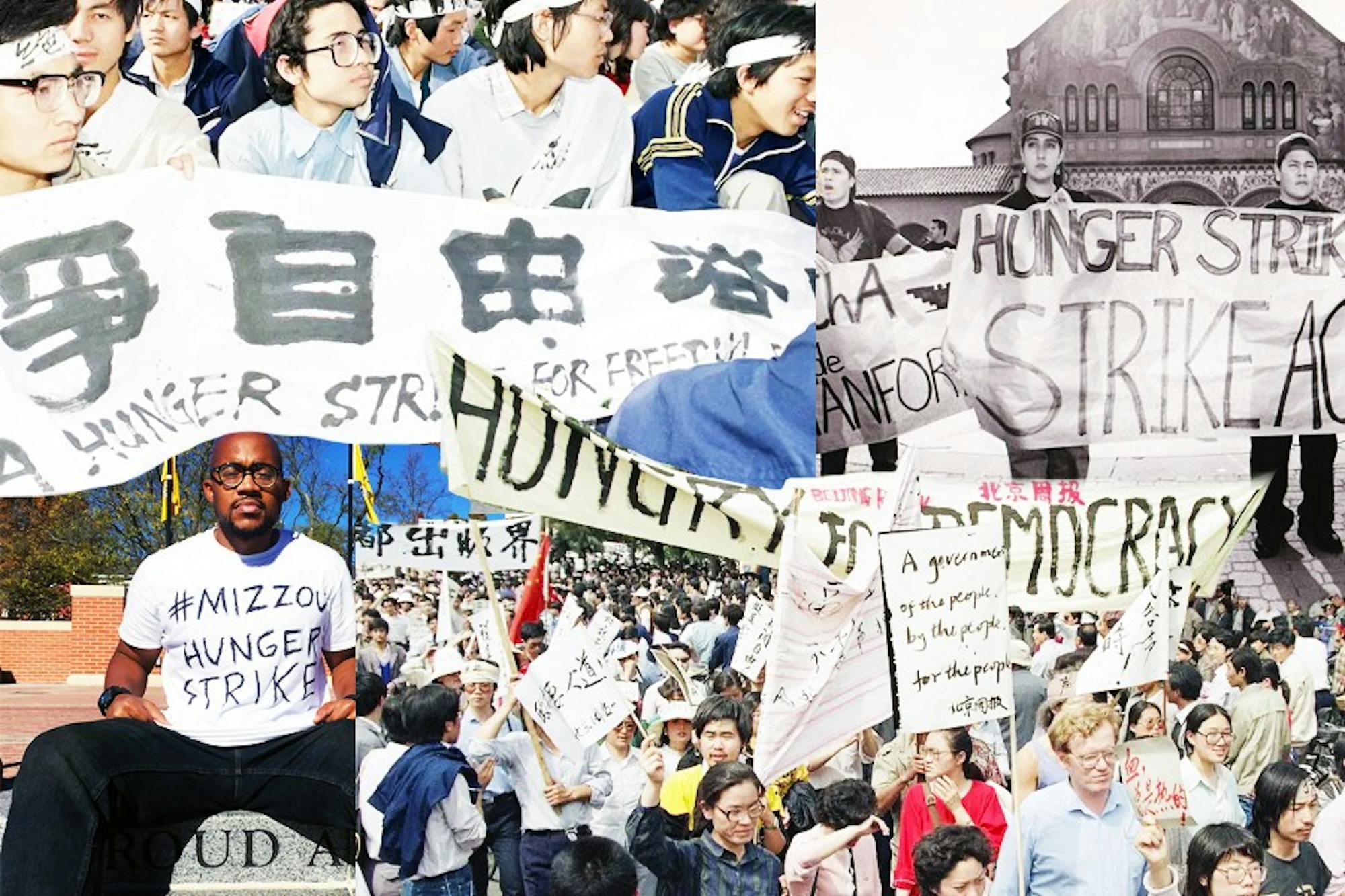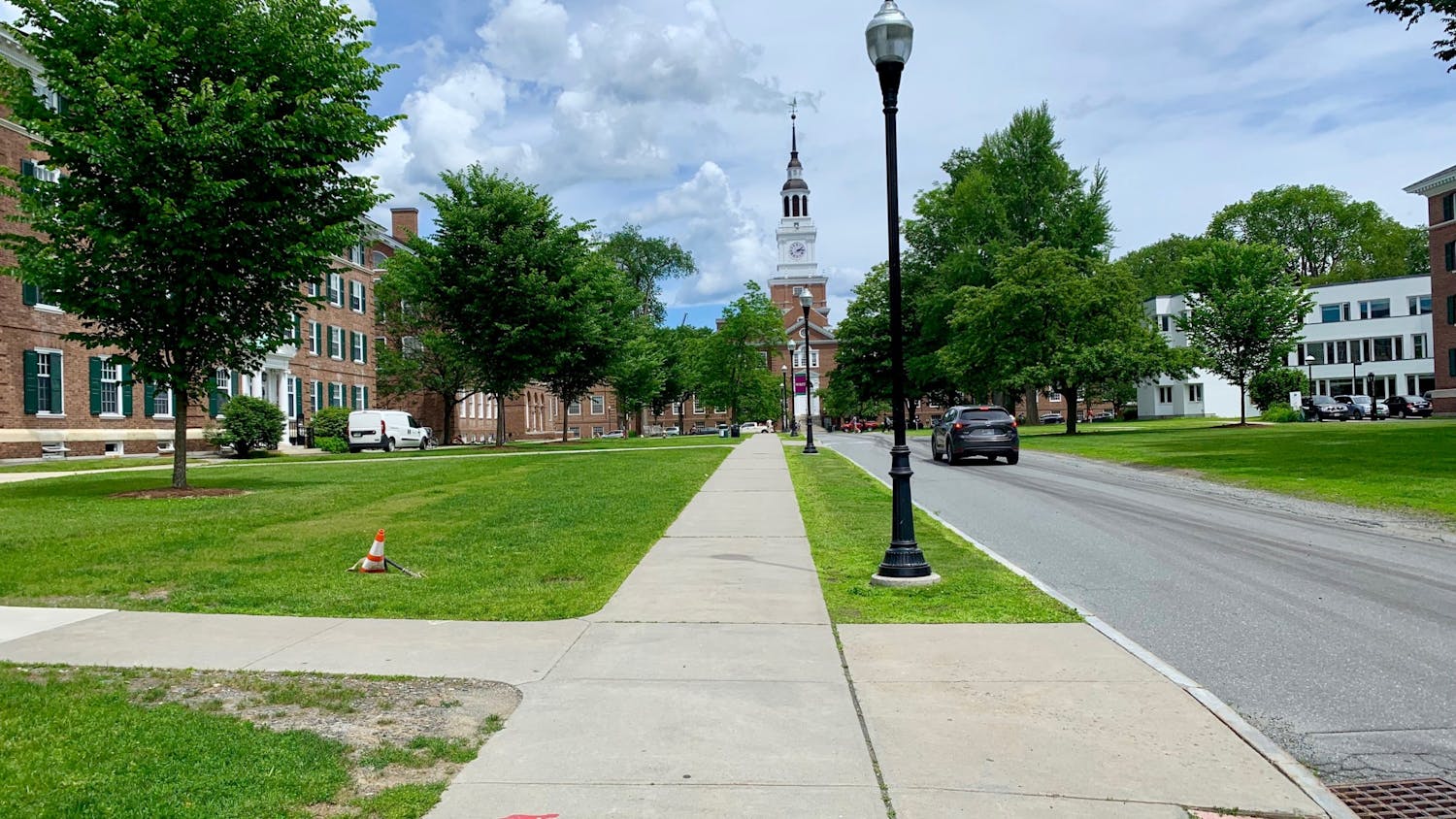When Dartmouth Ph.D. student Maha Hasan Alshawi went on a hunger strike in protest of the College’s handling of her allegations of harassment and retaliatory academic action by two computer science professors, other Dartmouth students supported her in various ways, including through public sit-ins, a petition and hashtags on social media. Hunger strikes, like Alshawi’s, have a long and robust history on college campuses.
A unique approach to campus activism, hunger strikes are usually adopted by a small group of students. They involve participants fasting, or only taking in liquids, over a period of time as an act of protest to achieve a specific objective. According to English professor Mark Boren at the University of North Carolina Wilmington, who wrote “Student Resistance: A History of the Unruly Subject,” hunger strikes are a “nonviolent means of demonstration that show a deep personal commitment to a cause.”
Cassie Barnhardt, an associate professor of educational policy and leadership studies at the University of Iowa, said that hunger strikes are a risky form of activism.
“A hunger strike, by its nature, has an element of high risk to it because the strikers themselves are saying ‘I am willing to put my life on the line for this,’” Barnhardt said.
University students across the world have staged hunger strikes to pursue change. One such mobilization, on a large scale, was the Tiananmen Square hunger strike of 1989. Thousands of Chinese university students protested for a variety of purposes, including political reforms, freedom of the press and freedom of speech. As a part of the larger pro-democracy movement, the hunger strike garnered public support in the form of mass protests and attracted global media attention.
In the United States, hunger strikes have been adopted by college students for a variety of causes, ranging from activism for racial justice to protests for better labor conditions for campus employees.
In the 1990s, students across U.S. universities adopted hunger strikes to protest for the establishment of ethnic studies programs. In 1994, a group of students at Stanford University started a hunger strike in part to demand that the administration create a Chicano/a studies major. Student strikers camped out on campus for three days. Two years later, an undergraduate program of Comparative Studies in Race and Ethnicity was established, which includes the Chicano/a studies major.
Similarly, at Northwestern University, 17 students started a hunger strike in 1995 to pressure the school into starting an Asian American studies program. One student went for 12 days without food, and in 1999, the Asian American studies program was established. A coalition of Hispanic, Asian American and Black students at Columbia University initiated a hunger strike in 1996 calling for the administration to establish a broader program of ethnic studies. The strike lasted almost two weeks, with the administration eventually pledging to hire more minority faculty members.
Hunger strikes demanding improved labor conditions became more common in the 2000s. In 2005, students at the University of Georgia took on an eight-day hunger strike in an effort to increase wages for janitorial workers. In 2007, nine students at Harvard University staged a nine-day fast in protest of the wages paid to Harvard’s security guards.
More recently, student striker Jonathan Butler at the University of Missouri at Columbia undertook a seven-day hunger strike in 2015 that was part of a series of protests addressing campus racism. His action attracted national media, and the movement resulted in the resignations of university president Tim Wolfe and chancellor R. Bowen Loftin.
Barnhardt pointed out that hunger strikes often occur along with other organized and collective protesting activities and have a “community nature.”
“The whole cause is much bigger,” Barnhardt said. “You have a handful of folks who are willing to put themselves on the line, while other like-minded individuals are also supporting the movement or the cause in other ways.”
Boren noted that hunger strikes are often used to garner local media attention, which in turn widens their movement both on and off campus.
“When [hunger strikes] get coverage, they can significantly pressure authorities to act,” Boren said. “As time goes on that pressure increases.”
Alshawi’s hunger strike — now ended — has been reported by both local and regional media outlets, including the Valley News, the New Hampshire Union Leader and the Boston Globe. In Alshawi’s case, Dartmouth agreed to pursue an external investigation of Alshawi’s claims, which is now underway.
At Dartmouth, Alshawi is not the first student to undertake a hunger strike as a tactic for protesting. In November 2010, Irvin Gomez ’14 organized a 36-hour hunger strike to raise awareness and elicit a more vocal response from the administration for the Development, Relief and Education for Alien Minors Act — known as the DREAM Act. The strikers collected signatures for their petition on the Green and received support in the form of sleeping bags and warm water from fellow students. Student strikers were also monitored by representatives from the administration to ensure that they were consuming enough liquids.
Alshawi, however, is the first Dartmouth student to start a hunger strike amidst a global pandemic, which created both opportunities and challenges for her to garner support. Despite restrictions with public health guidelines, Dartmouth students managed to organize socially distanced sit-ins and protests in Hanover, while also creating hashtags such as #justice4mahahasan and other social media movements to push for Alshawi’s cause.
“During the lockdown and restrictions of social distancing, students increased their use of virtual social networks, and so students and activists are communicating at greater levels than ever,” Boren said. “This can dramatically increase support for a cause, bring secondary media coverage to bear and pressure authorities to act. So even though there’s a pandemic raging, it is actually an opportune moment for student activists to press for changes.”
Correction appended (Aug. 17, 2020): A previous version of this article included a quote from Barnhardt that stated that hunger strikers are willing to put their lives on the line for "the fish." The article has been updated to reflect that the correct quote is that hunger strikers are willing to put their lives on the line "for this."




